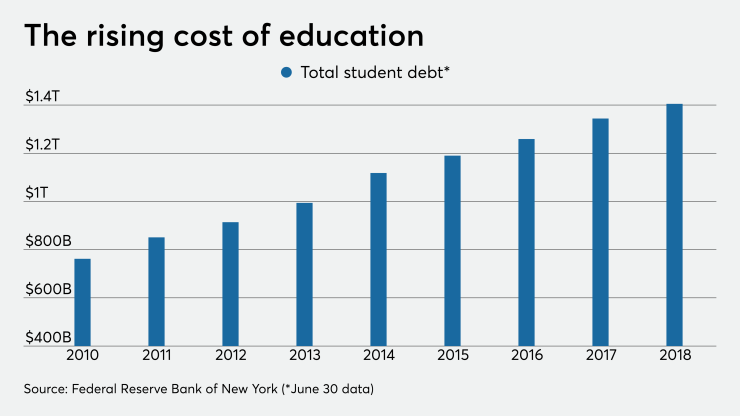In December, Senator Rand Paul (R-KY) introduced the Higher Education Loan Payment and Enhanced Retirement (HELPER) Act, the newest piece of legislation targeting the student loan crisis. This bill comes after several similar bill proposals, including the Employer Participation in Repayment Act, which would enable employer-sponsored student loan repayment and tuition payment plans to be tax free up to $5,250.
But how is HELPER different? It maintains the same tax benefit for employer-based student loan repayment and tuition payment, and adds some additional features:
- It allows individuals to take up to $5,250 – tax and penalty free – from their 401(k) or IRA each year to help pay for college or pay down student loan debt. This benefit extends to spouses or dependents.
- It gives workers the choice to have employer contributions to their 401(k) plans count as Roth contributions. This gives them the option to pay the taxes on the benefit right away, allowing their savings to grow tax-free.
I am strongly in favor of this legislation because it incentivizes corporations and people over 50 to attack the huge student debt problem. Making the benefit tax-free will only increase the number of companies offering it. I have witnessed first hand how financial insecurity caused by excessive student debt can negatively impact worker productivity. Evidence shows that companies with less stressed employees experience higher productivity, lower turnover and greater profit. Student debt relief is truly a benefit that can pay for itself in terms of operating performance.
But what about using retirement savings to pay down student debt? Since the bill’s introduction, some have argued that young people dipping into their savings to pay down debt is a bad thing but this argument is not supported by the data. Indeed, 73% of borrowers say they are putting off retirement savings until after their student loans are paid off, according to a report from MIT Age Lab. By incentivizing more employers to help workers pay down their debts more quickly, it will actually enable them to start saving for retirement much sooner than they are currently.
Additionally, the HELPER Act will also ease the burden for parents and grandparents who are taking on the financial burden of their children’s student loans. When parents begin to assume this debt, they do it by a) taking a home equity loan, b) co-signing on private loans for their children, c) financing it short term through credit available on their credit cards, d) taking hardship withdrawals on the retirement accounts, or e) ParentPlus debt.
Most of these options carry high interest rates, but hardship withdrawals are especially punitive. To access funds in their 401(k) accounts, parents immediately pay all state and federal taxes on the withdrawal as well as a 10% penalty. For parents living in California, for example, withdrawing $25,000 would mean only $10,000 would actually go to help pay for their children’s education.
But under the HELPER Act, they could withdraw $10,000 and every penny would go to their children and not the government. Believe it or not, two of the fastest growing age segments for student loan debt are 50-59 and 60 and above. These parents and grandparents are facing the difficult trade off between affording their own retirement and helping their children get out from under a mountain of debt. By making retirement withdrawals tax free and getting more employers to shoulder part of the burden, this legislation helps both young and old deal with this problem.
The best thing about this legislation is that it recognizes and responds to the deep fundamental truth of our time: that today’s young adults are the first downwardly mobile generation in American history, with economic prospects less favorable than that of their parents and grandparents.
The baby boomers have accumulated great wealth spurred by a 40 year tailwind of favorable economic growth and ever-decreasing interest rates. Their children and grandchildren are facing a slower growing economy and many are doing it while saddled with unbearable amounts of student debt.
The HELPER Act recognizes this wealth gap by enabling a more tax-efficient transfer of this wealth from those that have it to those that need it.






